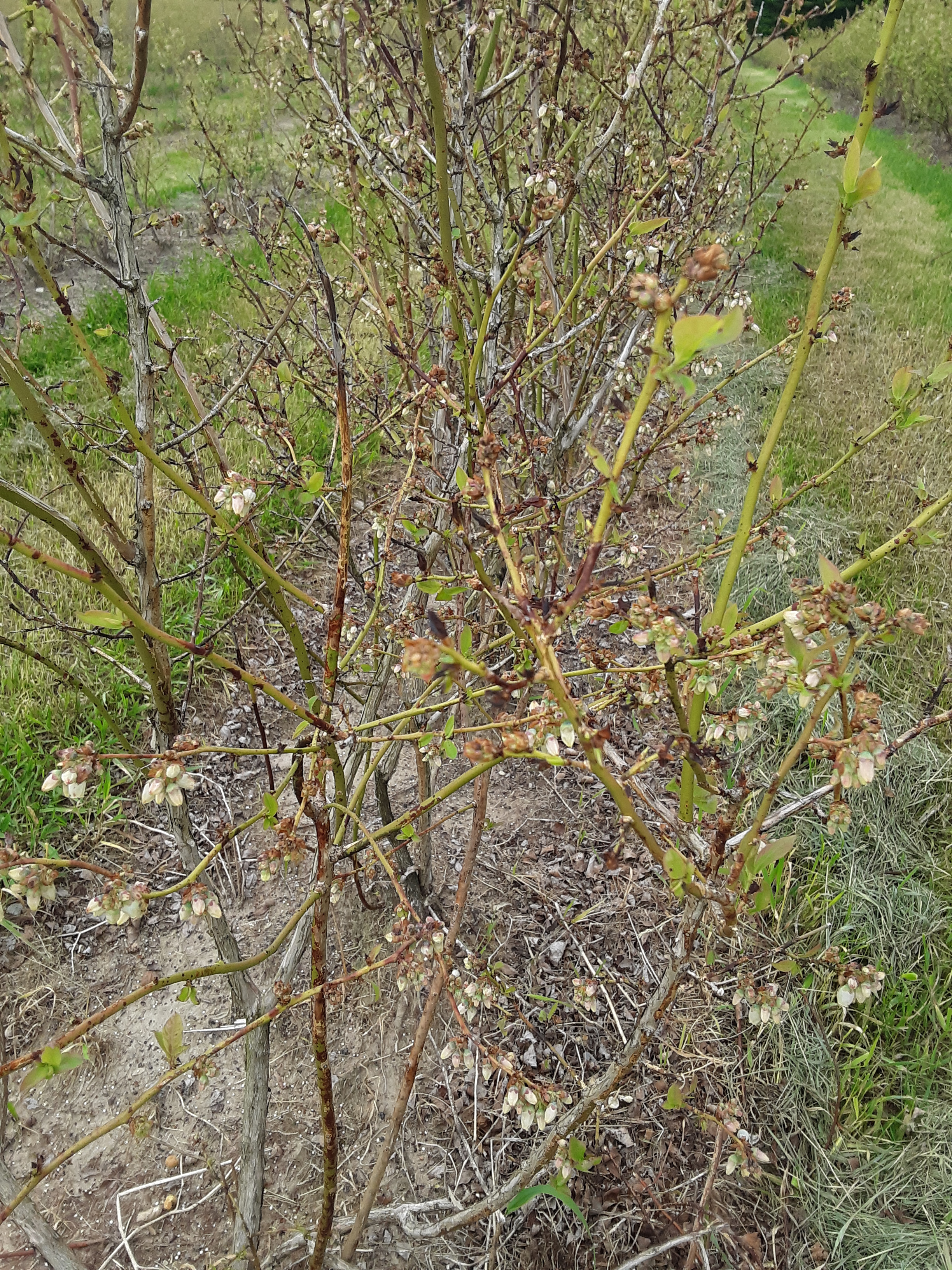West central Michigan small fruit update – May 26, 2020
Blueberries are in bloom thanks to the long-expected summer temperatures from last week. Despite recent late spring frosts events, small fruit crops came out unharmed.

West central Michigan is finally experiencing good weather conditions after a long, cool and rainy period. Currently, daily temperatures have remained above the 70s with some days reaching the mid- to upper 80s. Average daily minimum and maximum temperatures during the past seven days were 56 and 77 degrees Fahrenheit, respectively. So far, growing degree day (GDD) accumulation in west central Michigan since March 1 is 256 GDD base 50 F.
Regarding precipitation, no rain was reported in the area for the past seven days. The last important precipitation occurred on May 18 when we had a rain accumulation of 0.5 inches. Because of rains on May 15 to18, most blueberry fields were with standing water for the past seven days. Those conditions made it difficult to use pest management equipment.

So far, major problems in blueberries are weather related. After the freeze/frost events from two weeks ago, some growers that turned on the irrigation for frost protection damaged the fields instead of helping to prevent the frost damage. Growers need to be back in the field as soon as the ground dries up.
It is important to reinitiate the fungicide treatments to prevent outbreaks of fungal diseases in blueberries. Mark Longstroth, Michigan State University Extension fruit educator in southwest Michigan, is reporting the presence of anthracnose and botrytis blight in some blueberry fields. Plants injured by frost are more susceptible to fugal infections, especially if there is a lot of plant tissue damage such as the one in the photos.
Some fungicides have dual action against anthracnose and botrytis. Among those, Pristine and Quash provide good protection against those disease. Check the 2020 Michigan Fruit Management Guide (MSU Extension Bulletin 154) for more options.
Regarding insect pests, cranberry fruitworm is already coming out of diapause. The first adult emergences are already reported in Allegan and Van Buren counties. Traps in Allegan started capturing moths on Monday, May 11. Although in small numbers, moth catch has been sustained for the past two weeks. On Monday, May 25, monitoring traps at the MSU Trevor Nichols Research Center reported an average of three moths per trap. Thus, it is necessary to prepare the first insecticide application against fruitworms taking either May 11 or May 18 (depending on the conditions of the crops and variety) as a biofix to calculate the time for the first application.
Since honey bees are present in most fields, select an insecticide that is less harmful for them. Right now, daily maximum temperatures are in the upper 80s and low 90s. Those temperatures are suitable for optimal efficacy of Bt (Bacillus thuringiensis, var. krustaki) against fruitworm larvae with no effect on pollinators. Check the 2020 Michigan Fruit Management Guide for commercial names for Bt and doses.
Finally, if you need more information or further assistance with those issues, email your local MSU Extension educators, Carlos Garcia, garcias4@msu.edu, and Mark Longstroth, longstr7@msu.edu.



 Print
Print Email
Email


